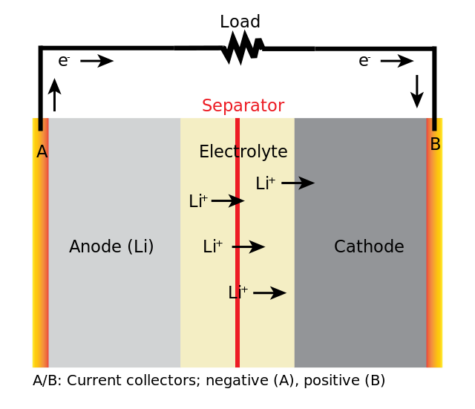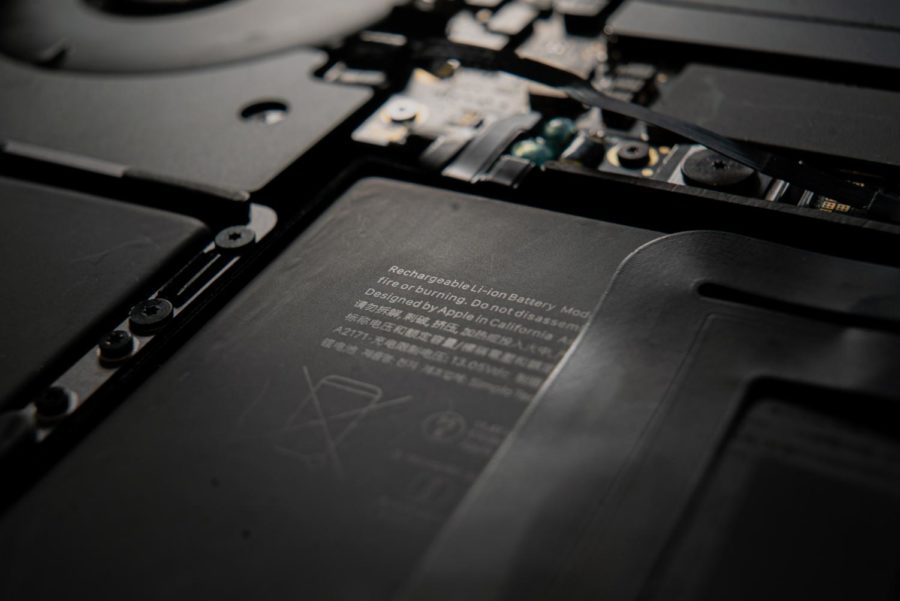The Hidden Dangers of Electric Vehicles
Climate change affects all aspects of our society. While electric vehicles seem like an effective solution, some electric vehicles, such as cars and e-bikes, are spontaneously combusting.
Lithium-ion batteries come in a variety of sizes, each unique and complex depending on the device, which ranges from large batteries for e-bikes and electric cars down to cell phones which can be mere millimeters in volume.
In the fall of 2022, Hurricane Ian ravaged Florida, causing billions of dollars worth of damage and leaving thousands of residents homeless. An additional unforeseen concern reared its head with its widespread flooding: electric vehicles were spontaneously combusting.
Hurricane Ian was a Category 4 storm that caused massive storm surges and unprecedented flooding. In the past, the flooding of cars during hurricanes was merely classified as property damage. Gas-powered vehicles could be stripped for parts and resold, without a second thought. However, with the recent surge in sales of electric vehicles, the conversation around flood damage has shifted from solely property loss to including the dangers posed by electric vehicles.
Electric vehicles are already extremely common in many places in the United States, such as Florida and New York City, with an estimated 17 million electric vehicles (cars and trucks) sold globally between 2012 and 2020. According to the Paris-based International Energy Agency, “In 2019, 2.2 million electric cars 1 were sold, representing just 2.5% of global car sales. In 2020, the overall car market contracted but electric car sales bucked the trend, rising to 3 million and representing 4.1% of total car sales. In 2021, electric car sales more than doubled to 6.6 million, representing close to 9% of the global car market and more than tripling their market share from two years earlier. All the net growth in global car sales in 2021 came from electric cars. We estimate there are now around 16 million electric cars on the road worldwide.” Electric vehicles sold are estimated to reach 145 million units on the road by 2030. Electric bikes, which are even more popular, have an estimated 130 million sold between 2020 and 2023 alone. These electric vehicles are touted as environmentally friendly as they use non-exhaust emitting lithium-ion batteries rather than fossil fuel-burning gasoline-powered vehicles. However, unlike gasoline-powered vehicles, these electric vehicles are impacted by climate change in unexpected ways and come with a unique set of issues, some exacerbated by saltwater flooding.
Hurricane Ian caused significant saltwater flooding which submerged many cars including many electric vehicles. When the saltwater entered these cars’ engines, it formed a bridge between the anode and cathode, the negative and positive electrodes respectively, in the lithium-ion batteries, causing many of the cars to combust.
Fires caused by the combustion of lithium-ion batteries require copious amounts of water and personnel to extinguish. They burn at extremely high temperatures and can reignite as energy may transfer from exposure to other conductive sources. Kristin Poland, the deputy director of the NTSB’s Office of Highway Safety highlighted this danger in The American Prospect stating, “As they’re moving that vehicle or if they pass a chain over that vehicle that could create new electrical connections that may transfer energy from one place to another that’s not intended, [that could] cause a fire again.” This spontaneous reignition is such a problem that many companies will not tow electric vehicles, and store them in large fields to allow 50 feet of space between vehicles, to minimize the danger.
On average, fires involving standard, petroleum-run vehicles take an hour to put out, and can be extinguished with a few firefighters and about 1,000 gallons of water. Electric vehicles, by contrast, take an average of 5 to 6 hours, and can require 30 to 40 firefighters and about 20,000 gallons of water to extinguish. The danger can remain long after saltwater exposure as some vehicles exploded weeks after being affected.

Electric bikes have similar issues. They are powered lithium-ion batteries that, if cheaply made, can explode when left charging for too long. The electrolytes making up the thin and vulnerable membrane that separates the anode and cathode is sensitive to even minimal amounts of dust or damage, which can lead to corrosion of the battery down the line, and a possibility of combustion. Once one cell in the battery ignites, it starts a chain reaction that causes all cells around it to erupt, quickly exploding from a tiny spark to a massive fire.
The production of electric vehicles has increased exponentially in the last decade, and it will only continue to grow. With increasing climate change and electric vehicles, combustion fires may become more widespread. In order to properly mitigate these issues, it is the duty of the manufacturers to not only inform their consumers of the dangers but to equip their stakeholders with the necessary tools and specialized training to extinguish these fires. This is becoming an increasingly urgent matter as climate change worsens, hurricanes will become more frequent and these relatively infrequent occurrences of electric vehicles combusting will quickly become a much more pressing issue.
Additionally, lithium-ion batteries are not only dangerous for their explosive properties but also can be dangerous and damaging to the environment through their production.
The batteries are made of expensive metals whose mining negatively impacts the environment. Most of the harm dealt to the environment stems from the cathode, which houses many valuable and damaging metals.
The cathodes are made of mainly cobalt and nickel, two very expensive metals that are in short supply. Mining these metals is harmful to the environment due to the damage it causes to surrounding landscapes and water supplies. In addition, it requires massive amounts of fossil fuels to power the mines.
But there are solutions to make batteries and their production more sustainable. One way is to reduce the amount of problematic metal used, which can be done by diluting the amount of cobalt and nickel used in these batteries and mixing them with metals that are cheaper to produce. Additionally, the batteries can be repurposed for other, secondary uses. Retired batteries still have a substantial amount of battery capacity left, so they can be reused in less demanding vehicles, or battery cells can be recombined to create useful, renewed battery packs. These methods of repurposing can extend their lifetime and usefulness and have a positive impact on the environment as a whole. Another way to produce batteries sustainably is by recycling them, stripping and reusing their parts, using processes such as smelting without having to further damage the Earth with additional mining. However, this process of recycling still requires a lot of energy and is taxing on the environment.
The most sustainable solution would be to implement all available recycling and reusing methods, but most battery production and mining of the metals involved is done by large companies whose main motivation is profit, not sustainability.
Some governments have instituted measures to incentivize companies to apply these policies, to ensure a higher level of safety for the planet. For instance, China, one of the largest producers of electric vehicles, increased tariffs and prices of battery imports to encourage companies to buy recycled batteries, by making the alternative of mining and producing new batteries more expensive.
As lithium-ion batteries become increasingly popular, their production will become cheaper and faster, so it is imperative we implement sustainable policies now, before it is too late.
Lithium-ion batteries were 30 times cheaper in 2021 than when they first entered the market almost 30 years ago, and it was predicted in 2021 that by 2023, they would drop an additional 20% from their 2021 prices. By the mid-2020s, it was predicted that the price of electric vehicles would be on par with the price of gas-powered vehicles. This is much better for the environment, right?
It can be. Electric vehicles are indeed still better for the environment than their gas-powered alternatives, but their new technology has created issues that need to be addressed. Poor manufacturing and extreme weather can cause electric cars and e-bikes to combust, ruining the engine. These faults can have deadly consequences if not properly managed.
However, with all that being said, the coverage of electric vehicle fires is disproportionate to the number of fires occurring. There are 25 fires for every 100,000 electric vehicles sold, compared to the 1,530 fires for every 100,000 petroleum-run vehicles sold. However, electric vehicle fires are frequent news stories as they are more newsworthy, being newer, rarer, and more interesting to the public. This is misleading because it makes it seem like these fires and their dangers are more frequent and probable than they are. Although this coverage is disproportionate, it highlights important issues that need to be addressed as more of these vehicles are sold.
With new technology comes new risks — risks to the environment and to the consumers who use it. Through the dangerous, unsustainable use of cobalt and nickel, which is severely damaging the environment, and the danger of spontaneously combusting vehicles, to minimize the risk to both the planet and users, proper action must be taken. Politicians can pass legislation to motivate electric vehicle companies to act more sustainably and to discourage the use of poor, and often harmful, manufacturing processes, and address the issues surrounding this new technology.
On average, fires involving standard, petroleum-run vehicles take an hour to put out, and can be extinguished with a few firefighters and about 1,000 gallons of water. Electric vehicles, by contrast, take an average of 5 to 6 hours, and can require 30 to 40 firefighters and about 20,000 gallons of water to extinguish.
Yardena Franklin is a Chief Graphic Designer and Editor-in-Chief for ‘The Observatory’ yearbook, as well as a Staff Reporter for ‘The Science Survey’...

